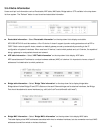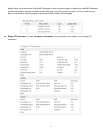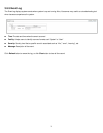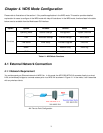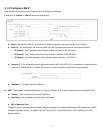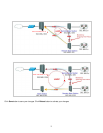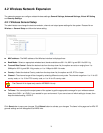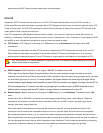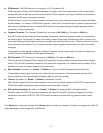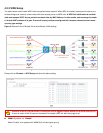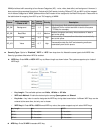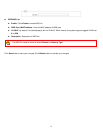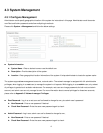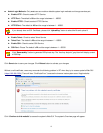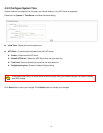
58
performance the ACK Timeout could be made longer to accommodate.
RTS/CTS
Adjustment of RTS Threshold can be done to turn on RTS. CTS Timeout will take effect only when RTS is turned on.
Unlike wired Ethernet, radio transmission may begin with a RTS (Request to Send) frame, and receiver responds with a CTS
(Clear to Send) frame. The RTS/CTS mechanism is called Channel Cleaning, all stations that received CTS will back off for
certain period of time, multiple of the slot time.
Each CTS packet has a NAV (Network Allocation Vector) number n, the channel is reserved for sender and receiver for
additional n-millisecond. The NAV guarantees the channel is free of interference in next n-millisecond. The last packet of ACK
will set NAV to zero, indicated that connection is done and free the channel to others.
CTS Timeout : CTS Timeout is in the range of 1~744 and set in unit of microsecond. The default value is 48
microsecond.
CTS Timeout will take effect only when RTS is turned on. Adjustment of RTS Threshold can be done to turn on RTS.
When hidden wireless stations are present in the wireless network RTS can be considered to turn on to minimize
collisions and increase performance. Ensure CTS timeout is long enough to avoid frequent re-transmission of RTS.
Slot Time and ACK/CTS Timeout settings for long distance links. It is important to tweak settings to achieve the
optimal result based on requirement.
RSSI Threshold : RSSI Threshold is in the range of -128~127.The default value is 24.
RSSI is defined as Received Signal Strength Indication, when the received signal strength from peer is below this
threshold, the peer will be consider as disconnected. Set the threshold higher will make roaming happen earlier, set lower
will allow weak signal peer to connect.
In normal situation, the longer distance the lower signal strength will be
sensed between peers people could consider to lower RSSI threshold to have bigger coverage from the AP or
AP client perspective. If it doesn’t work well then people could consider to jack up RSSI threshold to have
stable smaller coverage and leave AP clients in longer distance to associate with closer AP.
Beacon Interval : Beacon Interval is in the range of 1~5000 and set in unit of millisecond. The default value is 100
msec.
Access Point (AP) in IEEE 802.11 will send out a special approximated 50-byte frame, called “Beacon”. Beacon is
broadcast to all the stations, provides the basic information of AP such as SSID, channel, encryption keys, signal
strength, time stamp, support data rate.
All the radio stations received beacon recognizes the existence of such AP, and may proceed next actions if the
information from AP matches the requirement. Beacon is sent on a periodic basis, the time interval can be adjusted.
By increasing the beacon interval, you can reduce the number of beacons and associated overhead, but that will likely
delay the association and roaming process because stations scanning for available access points may miss the beacons.
You can decrease the beacon interval, which increases the rate of beacons. This will make the association and roaming
process very responsive; however, the network will incur additional overhead and throughput will go down.



